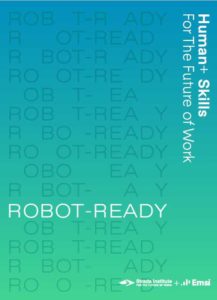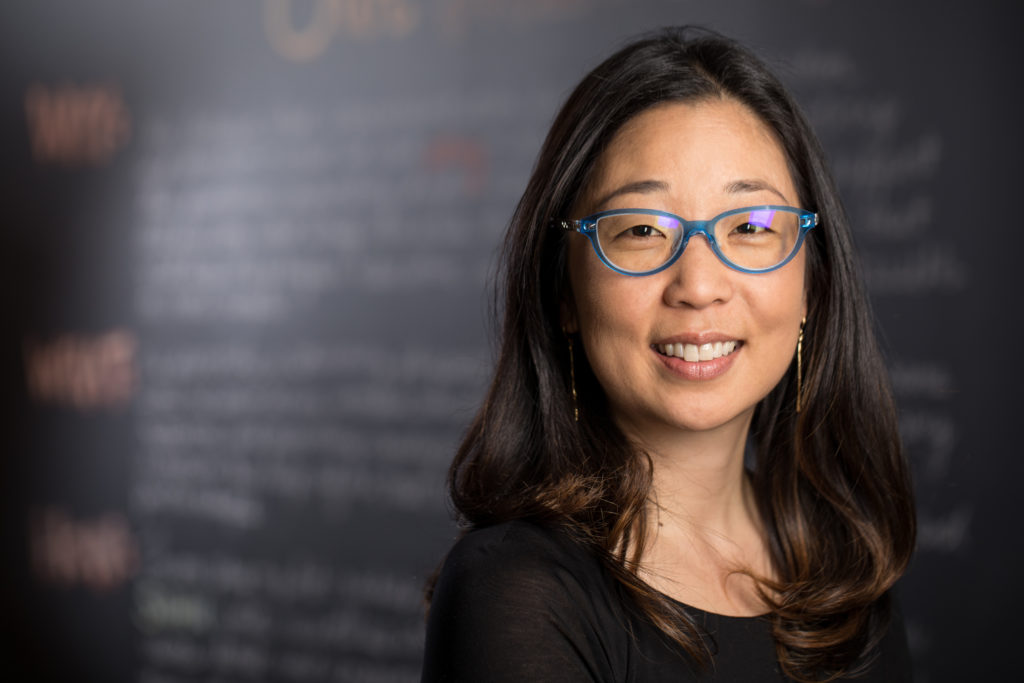Look around. We’re already toe-deep into a world in which humans and machines collaborate. Chatbots are often our first interaction with a customer service department before we’re connected to a “live” representative. Robots work alongside humans on assembly lines and perform repetitious work such as lifting and attaching heavy doors to new vehicles. Robo-human workplace interactions are going to be more commonplace as technology makes it easier to automate parts of our jobs.

Are we prepared for the future of work? A new study says “no.”
Robot-Ready, the study from Strada Institute for the Future of Work and Emsi, a labor market analytics firm, argues that the skills needed now and for the future “combine the technical with the human: programming + ethics, AI + emotional intelligence, or logic + judgment.”
In other words, the future worker needs to work side-by-side with technology, supplying the human soft skills that machines cannot learn or perform. The study argues that postsecondary education is out of step when it comes to recognizing and addressing these changes to the workforce.
During an interview for the Work in Progress podcast, Michelle Weise, the chief innovation officer and senior vice president, workforce strategies at Strada Education Network, told me that postsecondary educators have been consumed with a needless debate of a false choice between the liberal arts and vocational training — academics don’t believe that they should be preparing students for the workforce. They believe that career-specific work should be left to the employer.

Weise said this false choice has derailed the opportunity for postsecondary education to better prepare our learners for the future. In particular, the report looks at liberal arts programs which are seeing a drop in enrollment.
“As we think about these in-demand human skills, one of the major sources of these kinds of competencies are liberal arts programs. Data shows us is that liberal arts grads are learning how to learn for a lifetime and they’re using those very broad human skills to transfer from domain to domain, but they’re often doing it stumbling in the dark by themselves,” said Weise.

“One of the big chasms that we have is the disconnect between education and employment. Educators and employers seem to value the same outcomes, but they speak entirely different languages. We can’t just stick with what we’ve got and continue to let students figure out how they translate their skills into the workforce. They need better career advising so that they can be successful more quickly as soon as they graduate,” she said.
Robot-Ready argues that the time has come for a “modern-day Rosetta Stone” to help connect the three key groups — employers, educators, and the learner. “I think one of the most disheartening things in the education-to-employment space is to see so many people working in silos, and not collaborating with one another,” Weise told me. “It would just be incredible if we could bring all these groups together to actually build that common taxonomy to start collaborating on that Rosetta Stone so that we have more standardized job postings and that employers are really articulating exactly what it is that they are asking for from educators and workers.”
“We have to be much more deliberate about how we help students through this process, and there’s a great opportunity ahead for a lot of institutions to really embrace this new work and build those learners of the future who really can pivot from job to job and leverage those skills from domain to domain,” according to Weise.
Robot-Ready concludes that the changing nature of work presents an enormous opportunity for liberal arts to re-establish its place in higher education. “Their place has been shrinking over the past few decades in response to decreased demand from students. Higher education institutions will need to change how the liberal arts are taught, collaborate with other disciplines and reflect on the design, ethics and social challenges that face us in a new world.”
Join the Conversation: How should we adjust to a robo-human workplace? Tell us your thoughts on our Facebook page.
© Copyright 2024 by Structural Unemployment, LLC dba WorkingNation